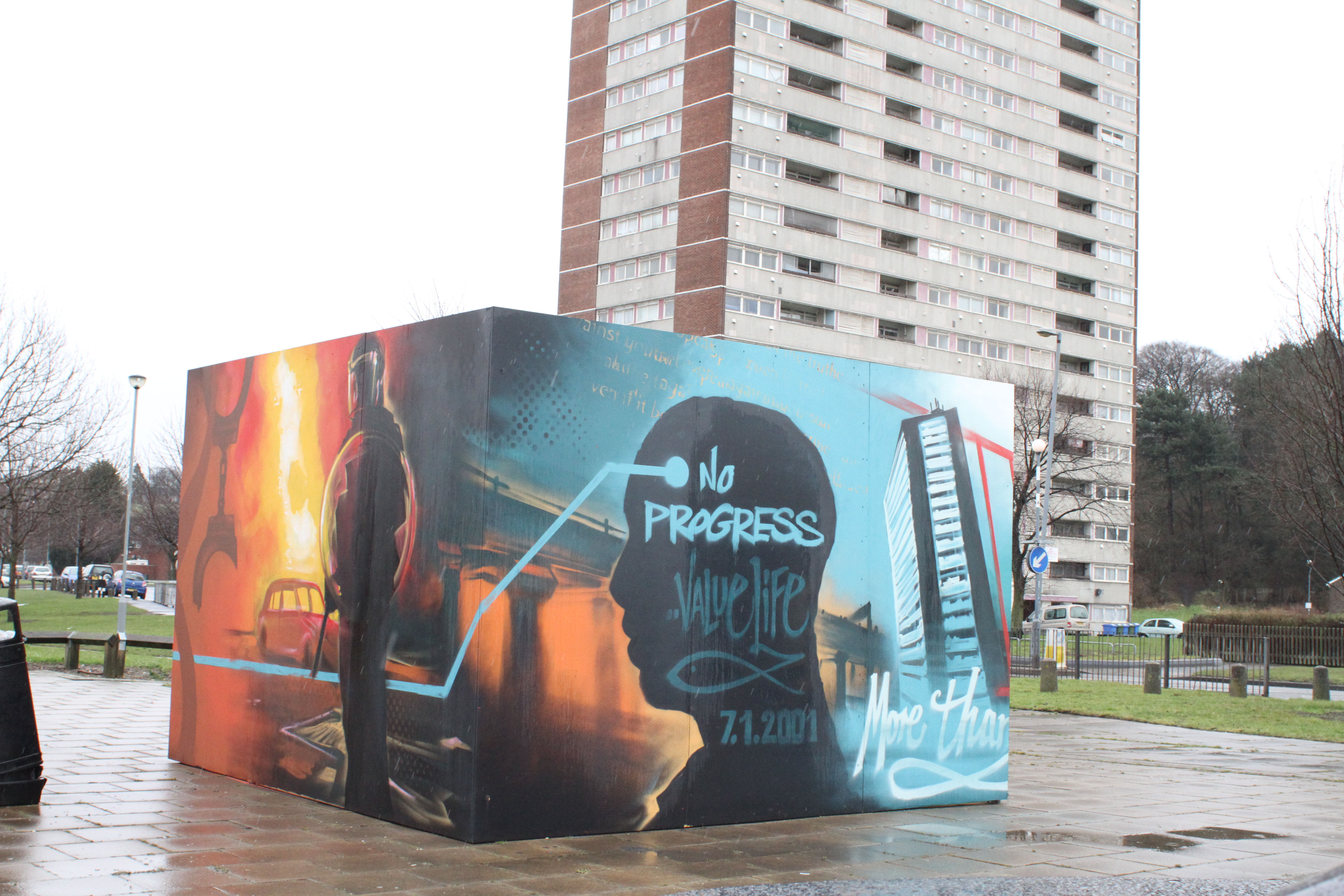
The results of a week-long art partnership-project between the University of Birmingham’s Department of Theology and Religion, an internationally renowned Muslim graffiti artist and young men from a deprived east Birmingham estate are set to be displayed on campus from today (Tuesday 13 March), bringing Bromford’s dreams to the University community.
For the last 18 months Dr Chris Shannahan, a Research Fellow in Urban Theology has been working with unemployed young White and Somalian men from Birmingham’s Bromford estate, an area of high unemployment and deprivation and a relatively isolated community, alongside international award-winning artist, Mohammad Ali, to project their experiences of the present and hopes for the future onto a huge cube, 8 feet high and 12 feet long.
The men spent a week working alongside Ali to project their dreams onto the giant cube in an attempt to vocalise their sense of powerlessness growing up in their deprived community.
Chris explains:
“This project explores how the experience of social exclusion shapes the way unemployed people talk about their identity, about meaning and about truth. The level of youth unemployment on the estate is a mammoth problem and the experience of the young men in Bromford similar in many ways to life on 100s of comparable urban estates in the UK. The project has enabled unemployed young men to draw upon graffiti art and rap music to articulate their own fears and hopes.The cube itself raises challenging questions about the relationship between social exclusion and spirituality way beyond the Bromford estate.
“The cube has received an overwhelmingly positive reaction in the Bromford community. Passers-by stopped to take photos and ask us questions about the project while we were working on it. To get a full picture of the men’s feelings, it is important to take in all four sides of the cube which represent different challenges the men face. On one side there is reference to a date of the death of a man killed on the estate ten years ago and it was fascinating to see that within several hours of painting this date, people were bringing flowers and the cube became a shrine, which blew me away.”
The four sides of the Bromford Cube of Dreams show the following:
- A sense of powerlessness
- A young man valuing the importance of life
- Prison bars to show a sense of being trapped but a refusal to remain there
- The importance of prayer and a sense of Spirituality
The cube will be on display on campus from today (Tuesday 13 March) outside the library and will be formally welcomed on Friday 23 March with an address and seminar exploring social exclusion, graffiti and youth spiritualities. Members of the team who worked on the cube will also be describing their experiences of taking part in the project and there will be a musical performance by the young men.
Chris concludes:
“Over the last ten years, urban youth have been the centre of government social policy, with a big focus on anti-social behaviour and young men who have been put up as convenient scapegoats for images of broken Britain and moral decline.They are more often written off than listened to and so this project has given a group of young men who rarely get an opportunity to tell their story, a forum to do this. Whilst this project won’t change the world, for a little while, giving these young men an audience has changed their lives and uplifted the community.”
Following its display on campus, the cube will then embark on a regional tour which is likely to include stints in Centenary Square, the Drum Arts Centre, BMAG and an appearance at the Greenbelt Arts Festival later in the year, before it returns home to the Bromford estate.
The Bromford Cube of Dreams will be on display on the University’s campus from Tuesday 13 March and the welcome reception and seminar exploring urban social exclusion, youth spiritualities and painting as social change will take place on Friday 23 March from 1pm. Mohammed Ali has previously painted similar murals in major cities including New York, Chicago, Toronto, Kuala Lumpur, Melbourne and Dubai.
For more information about the project which is co-funded by the University of Birmingham, Arts Council England and WorthLimited, please visit the website or contact Dr Shannahan via c.j.shannahan@bham.ac.uk.